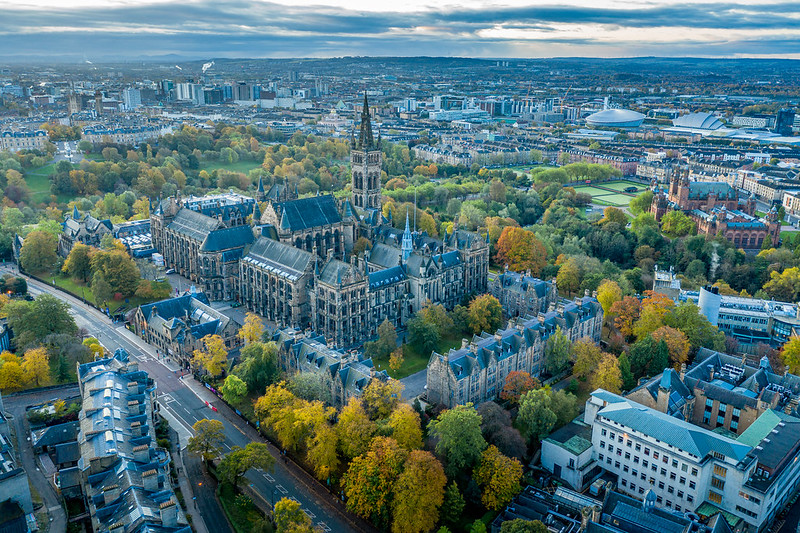Climate leaders set out their stall for COP26

LDC Ministerial meeting and AOSIS Leaders’ Declaration set the tone for critical talks next month in Glasgow. CASA’s Mairi Dupar reports.
Least Developed Countries’ leaders met in Thimphu, Bhutan yesterday, 11 October 2021, and issued their top priorities for the forthcoming COP26 talks in Glasgow, UK.
The 46 LDCs called for a step change in the global community’s response to climate-related loss and damage. This reflects their deep concerns about the damages they are already suffering – from sea level rise to more intense heat waves, droughts, storms and flooding.
“Effective and full-scale operationalisation of the Santiago Network on Loss and Damage” is a central demand of the Thimphu Call for Ambition and Action by the LDC leaders.
At present, the Santiago Network offers a web portal where countries can exchange information. Now, LDC ministers say it must be transformed, with a fully-funded Secretariat to coordinate technical assistance to developing countries.
The Thimphu document further urges countries “to provide finance for loss and damage and at scale that responds to growing needs”; and it emphasises the need to fill the overall climate finance gap for developing countries.
Meet current finance goal – and set more ambitious one
The $100 billion per year in climate finance promised by developed to developing countries by 2020 has almost certainly been missed (with OECD numbers putting the actual finance flows at around $79.6 billion in 2019, the last year for which data is available).
Developed countries need to make up the gap before COP26, the LDC ministers say. Hardly any rich countries currently pay their fair share of climate finance.
What is more, the global community should have its eyes on the next climate finance target – LDC ministers add. In Glasgow, countries must “agree on a process to determine an ambitious new quantified finance goal to take effect prior to 2025, based on science and driven by the needs and priorities of developing countries, particularly LDCs.”
The LDC Group is not the only negotiating bloc to dial up ambition on climate finance. Zaheer Fakir of the Africa Group of Negotiators’, recently quoted in ThomsonReuters, said that the AGN will come to Glasgow ready to propose an international finance target of $1.3 trillion per year by 2030.
Stop funding fossil fuels, to keep 1.5 degree world in reach
The LDC ministerial meeting and Call to Action comes less than a month after leaders of small island nations issued a fresh call for ambitious climate action at the Alliance of Small Island States’ (AOSIS) Leaders Summit.
Small islands’ predicament includes: their high degree of exposure to climate hazards and damaging losses from climate change, coupled with barriers to eligibility for concessional international finance, and crippling levels of debt. These challenges were made worse by the Covid pandemic, which reduced countries’ revenue sources, such as fish exports and tourism.
The AOSIS Leaders’ Statement – like the LDCs’ statement – not only calls for increases in finance for ‘green’ activities. It also highlights the urgent need to halt government subsidies pouring into high-emission, fossil fuel-based activities:
“At least $1.6 trillion were spent on fossil fuel subsidies over the 5-year period since the adoption of the Paris Agreement in 2015….[we] declare that the subsidising of fossil fuels by major emitters, particularly the Group of 20 (G20) runs counter to their obligations and is contrary to the best available science.”
What could COP26 deliver?
For his part, the COP26 President Designate Alok Sharma underlined today that the Glasgow conference cannot afford to be a ‘talking shop’ or ‘photo opportunity’ but must deliver meaningful change.
Echoing many of the themes raised by the most climate-vulnerable countries, Mr Sharma laid out his vision of what success at COP26 will look like:
“1) climate action plans to significantly reduce emissions by 2030 and reach net zero by mid-century, and to support adaptation to tackle climate threats 2) concrete action to deliver these plans, including agreements on reducing coal, electric cars, protecting trees and reducing methane emissions 3) to honour the $100bn dollar pledge and 4) a negotiated outcome that paves the way for a decade of ever-increasing ambition.”
Are developed and higher-emitting countries listening?
A possible watershed moment for G20 countries comes tomorrow, when G20 Finance Ministers and Central Bank Governors again convene under Italy’s Presidency, this time in Washington, DC.
On the Ministers’ and Governors’ agendas are Special Drawing Rights for countries to access international loans – a discussion which, depending on its outcome, could benefit stricken SIDS.
They will also, “Given the increasing relevance of green issues in the G20 agenda, … discuss options for strengthening the coordination in tackling climate change” Italy’s G20 meeting announcement says.
With G20 countries collectively responsible for some 80% of global greenhouse gas emissions, their actions have profound significance for the climate.
LDC and SIDS observers will be expecting more than just warm words. And they will be hoping that the G20 meeting heralds substantively new, additional announcements on emissions cuts, fossil fuel subsidy phase-out and climate finance, ahead of COP26 and therefore even faster than Mr Sharma’s timetable suggests.
image: Glasgow, courtesy Ian Dick